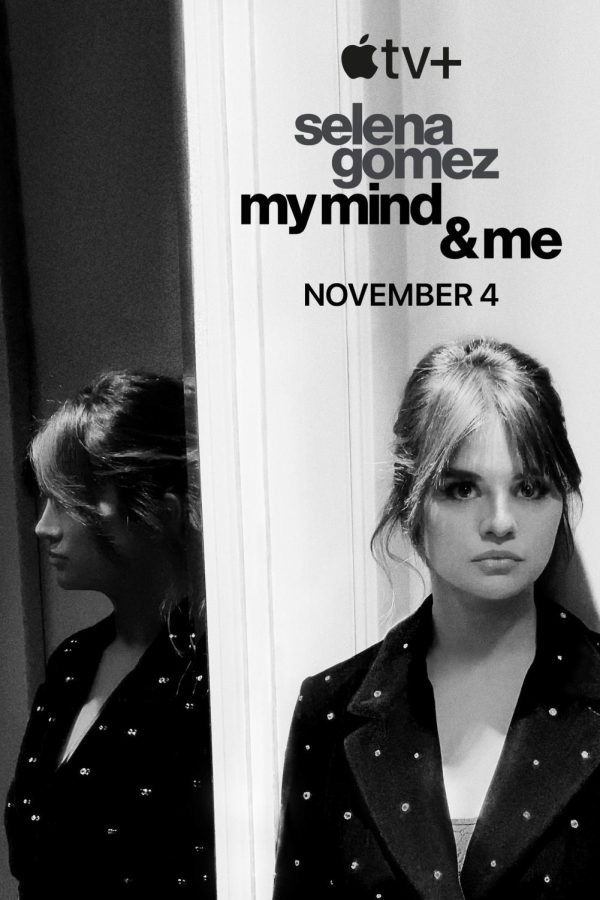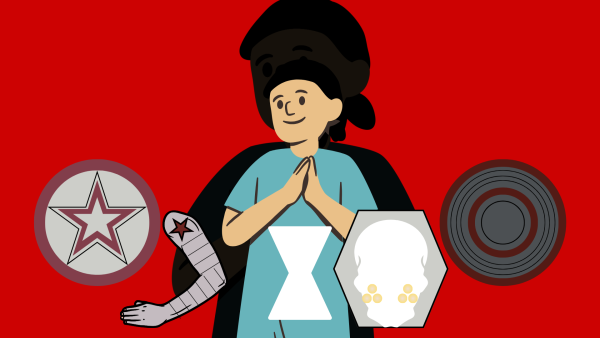Selena Gomez shows great vulnerability in new documentary, My Mind & Me
**Note for readers: Before viewing the film, please be aware of potential triggers.
Selena Gomez gives us a look into her mind with her new documentary, My Mind & Me, which was released on November 2 on Apple TV+. Gomez opens up about her mental health struggles over the past few years, and how the media has contributed to her fall. Gomez’s raw vulnerability makes for a truly eye-opening experience that normalizes mental health struggles, however, it felt like it had some missing pieces.
The film is composed of many clips from Gomez’s career, starting with a diary-like clip from 2016 while she was on tour. She’s having a breakdown in her dressing room, anxious, thinking her show is going to be a failure, and how it seems too “Disney”. It seems like a moment of anxiety, but it goes on to be much more than that. Gomez dives deeper into the reputation that Disney gave her, and how it set an unrealistic standard for her future career, constantly trying to top her teenage years. It was all the beginning of her mental health crisis.
While child stars of Hollywood dumping on Disney is nothing new in this age, it did give some insight on how Gomez ended up where she did, setting the pace of the film nicely.
The rest of the documentary goes into Gomez trying to reconnect with her roots in her small Texas town, as well as her highly publicized kidney transplant. Gomez also opened up about her bipolar diagnosis, and how it has affected and damaged many of her relationships.
The most moving part of the documentary has to be Gomez’s trip to Kenya in 2019. Gomez expressed that aside from music and acting, her main passion is philanthropy. She was a donor in the WE Project, an organization working to build accessible schools in a poverty-stricken Kenya. In the documentary, we get to see her meet the girls who attend the school and their views on life. In all honesty, seeing their points of view was the most eye-opening part of the film and stood out amongst all, rather than some of the more trivial issues Gomez faced, like arguments with friends. A documentary just on these girls would be worth watching.
Gomez’s involvement with the project was great to see, knowing that so many celebrities these days say they want to use their platform for change, but rarely do. This being said, Gomez does note that there is far more to be done than the small impact she’s made.
“I felt guilty being there sometimes. I hate that. I feel like I went and filmed and experienced, but it’s just so hard because I feel so selfish,” Gomez said. “Do I feel great? Yes, and do I feel like I left an impact? Yes. But do I feel like I’ve done enough? No.”
Another unique part of the film is Gomez’s ability to open up about mental health, which is extremely admirable, considering the amount of vulnerability she had shown. The way the documentary was directed and edited is especially interesting because it shows Gomez through all the highs and lows and all the ugly before and after her diagnosis. It doesn’t sugarcoat mental health the way other “relatable” celebrity documentaries have in the past, and it shows that mental health is a daily struggle that doesn’t just go away with a “social media cleanse” that influencers constantly rave about. Gomez is shown in tears, yelling at other people, and just being tired, like a normal person.
Niles North social worker Jennifer Silverman thinks that celebrity mental health representation is important to our society, as we can learn that we are not alone.
“I think people look up to celebrities and public figures, not just about fashion and style, but they also can look up about wellness and self-care,” Silverman said. “Sometimes just knowing that your favorite celebrity is also going through some of the same stuff that you’re going through can make you feel less alone.”
Although we do get a view of Gomez’s real life, the film felt like it had some parts cut out. It felt inconsistent at times, and the end definitely felt rushed. It felt as if an hour and a half was not enough to cover the past five years of Gomez’s life. There seemed to be sort of a resolution, but it seemed as if she went from extremely ill to somewhat better in what seemed like three minutes. This being said, it can be assumed that Gomez still struggles with these issues, but still is able to live in the moment and can thrive with a good support system. There will still be bad days, and that’s okay.
Selena Gomez beats the mental health stigma with this film, normalizing sharing about one’s mental health struggles. Her raw, real emotions are depicted in a relatable way in a beautifully directed manner.

Penelope is a senior, and this is her fourth year on North Star News. She's inspired by journalist icons like Carrie Bradshaw and Andie Anderson....








Ms. Neda Stano • Nov 21, 2022 at 12:08 pm
Based on this article, I would be interested in watching this documentary. Good job!